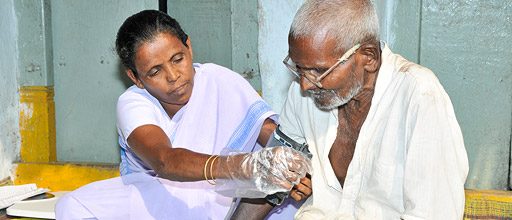
Shifting basic jobs from doctors to health workers a success
Shifting basic jobs normally done by doctors to health workers has worked successfully in low and middle income countries to manage conditions such as heart disease, diabetes and depression, Australian researchers have found.
The study, a review of 22 trials that was published today in the medical journal PLOS One, found the concept was a potentially effective and affordable strategy for improving access to healthcare for patients with non-communicable diseases.
Study author Dr Rohina Joshi, senior research fellow at The George Institute for Global Health and The University of Sydney, said: “Although this model has been studied in low and middle income countries, it has great potential for healthcare delivery in Australia.
“We’ve seen that it’s hard to attract doctors to work in rural and remote areas, where some of our most disadvantaged citizens live. Extending the role of healthcare workers is not about replacing doctors – it’s about freeing up the doctors to attend to difficult cases. Healthcare workers could fill the care vacuum in certain specialized areas, such as providing lifestyle advice and screening for risk factors like blood pressure and smoking,” she said.
“In Australia, we are carrying out research looking at the effects of task-sharing between physicians and non-physicians like pharmacists, nurses, community workers, especially in the realm of secondary prevention of heart disease. The idea is to save physician time and costs for more important life-saving issues.
“Modern technology, such as apps carrying algorithms to enable non-communicable disease risk factors, have made task shifting an even more attractive and do-able model.”
Shifting some jobs to health workers, however, was not the only answer to controlling non-communicable diseases in low to middle income countries, said Dr Joshi.
“The health workforce has to be substantially re-engineered. Health workers have to be trained in new skills such as disease-specific screening and management skills. Health workers should also be able to prescribe from a restricted list of medications, in consultation with physicians, where available.
“A trial in India showed that when health care workers could successful prescribe and administer antibiotics for neonatal infections, sepsis-related deaths in new-born babies dropped dramatically from 16.6 per cent to 2.8 per cent.”
Community health workers would also have to be provided with a range of basic equipment such as weighing scales, sphygmomanometers to measure blood pressure, glucometers to measure blood glucose and detect potential diabetes, and adequate drugs.
Given the lack of physicians in low and middle-income countries, especially in rural and remote areas, policy makers should consider developing standardised protocols and training programmes for community health workers in order to maintain safety and effectiveness of health care delivery. Dr Joshi said. Consultation should take place with medical and nursing councils, and the model should be developed as part of a system closely integrated with clinicians.


